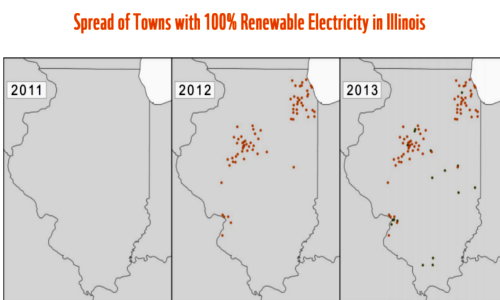Nuclear Power
The Southern Alliance for Clean Energy (SACE) has filed a legal challenge at NRC over Florida Power and Light’s (FPL) St. Lucie reactors’ steam generators. As reported two weeks ago (Nuclear Newsreel, February 24 and 25), an unusual amount of wear has been experienced at the relatively-recently replaced generators, leading to concern that the reactors could be headed to a situation similar to that of San Onofre, where a radiation-releasing steam generator tube rupture eventually led to the permanent shutdown of both reactors. The NRC and FPL insist that there are no safety issues posed by the thinning of the tubes, but that story has been heard before. And even if true, the economic ramifications may be a different story if conditions are such that new generators are already needed. SACE’s challenge calls for, at the very minimum, a public hearing on the issue.
A world awash in a nuclear explosives: Japan’s plutonium production plans pose a global threat. The Center for Public Integrity has produced an important and damning expose of Japan’s current plans–despite Fukushima–to open its Rokkasho Nuclear Fuel Reprocessing Facility. At full capacity, the plant could produce 96 tons of plutonium over the next 12 years, “an amount greater than all the stocks that remain in the United States as a legacy of the Cold War’s nuclear arms race.” 6.6 pounds of plutonium is sufficient make a nuclear weapon with an explosive power of 1 kiloton, or 1,000 tons, of TNT. The plutonium would be intended for use in Japanese reactors capable of using plutonium-based (MOX) fuel. One problem: Japan has no such reactors right now. Fukushima Daiichi Unit 3 did use some MOX fuel, and that may be one reason the reactor suffered so much more damage than the other reactors at the site (although in that case, “so much more” is a relative concept). While the government of Japanese Prime Minister Abe remains intent on restarting some of the country’s reactors, using plutonium fuel in them would elevate their risk potential considerably. This lengthy article goes into considerable more detail about the proliferation risks of Japan’s plans. An excellent piece.
The UK’s Rob Edwards, who writes frequently on nuclear issues, today discusses a 2012 incident at a Scottish naval reactor, where officials at first denied there had been an accident but later admitted that radioactivity had been leaking into the reactor’s cooling water. In Vulcangate: the web of deceit, Edwards writes “We now also know that even when [Defense Secretary Philip] Hammond did disclose what had happened, he was misleading. He insisted that there had been ‘no measurable change in the radiation discharge’ from the site despite official figures showing a tenfold rise in emissions due to the incident.”
Clean Energy
The far-right wing American Legislative Exchange Council (ALEC) trains its sights on city and local government to attack renewable energy. Having failed at overturning any state renewable energy laws last year (although ALEC is trying again this year), ALEC is turning some attention now to working at the city and municipal level. That’s one reason NIRS now has the capability to help you reach these same officials–and we will help you use it.
A new public opinion poll commissioned by CleanEdge and Solar City finds that yes, American support renewable energy (88%); and yes, Americans are interested in installing solar power on their homes (62%). 73 percent of homeowners also said they would welcome clean energy provided by an entity other than their utility. Somewhat surprisingly though, fewer than half of all homeowners understand that solar power is more affordable today than it was three years ago. You can download a report on the poll here.

A new report from several environmental groups shows that 91 Illinois communities, with a total of 1.7 million residents, are already receiving 100% of their power from renewable energy. Who would have thought a frosty rustbelt state would be leading the nation in renewable power? While some of the 100% renewable comes from renewable energy credits rather than direct renewable energy power, it is certainly a step forward, one that is replicable in other states, and is certain to be only the beginning.
Another article on the revolution in batteries and electricity storage, this one from the Guardian, which calls the prospect of cheap electricity storage a “convulsion of change about to hit the global economy.” That about says it all.
One way of financing clean energy projects is through the establishment of goverment-backed “green banks.” This concept may have some appeal given that federal support for clean energy has dropped from $44 billion in FY 2009 to a projected $11 billion in 2014. Efforts to set up such a bank at the federal level so far have failed–although at the federal level every proposal so far has included nuclear power as a technology that could be funded by a “green bank”–hardly what most people consider as “green.” That has led to opposition to the banks by environmental groups that normally might support such a project. Now, some states are considering establishing such banks; Connecticut already has done so.
Michael Mariotte
Permalink: https://www.nirs.org/2014/03/10/nuclear-newsreel-monday-march-10-2014/
Note: GreenWorld will not publish tomorrow, Tuesday, March 11, 2014. Join the Fukushima anniversary-related action nearest you! We’ll be back on Wednesday.
Comments are welcome! Say your piece above. Start a discussion. Don’t be shy; this blog is for you.
If you like GreenWorld, you can help us reach more people. Just use the icons below to “like” our posts and to share them on the various social networking sites you use. And if you don’t like GreenWorld, please let us know that too. Send an e-mail with your comments/complaints/compliments to nirs@nirs.org. Thank you!
Note: If you’d like to receive GreenWorld via e-mail daily, send your name and e-mail address to nirs@nirs.org and we’ll send you an invitation. Note that the invitation will come from a GreenWorld@wordpress.com address and not a nirs.org address, so watch for it.



